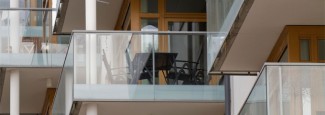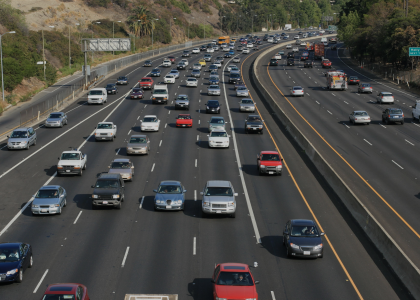Energy efficiency programs save an average of more than $100 in utility bills for low-income households living in multifamily buildings, helping many of them pay their bills on time and avoid service disconnections, according to an ACEEE survey of 32 programs across the United States.
Such savings are crucial for low-income households. These residents are finding it increasingly difficult to keep their housing costs affordable. Rents across the United States are out of reach for many, and federal affordable housing programs that offer rental assistance are at risk of being cut. While homeownership can offer many low-income families the opportunity to stabilize their finances and build wealth, these households often encounter barriers to buying a home.
Financial pressures lead many low-income households to search for low-rent apartments in multifamily buildings. The most affordable apartments are often older and in need of repairs. Because these apartments are typically not as energy efficient as newer buildings, they can create high energy burdens for residents.
Reducing energy burdens
In our new report, Closing the Gap in Energy Efficiency Programs for Affordable Multifamily Housing, we document how energy efficiency programs are doing their part to reduce energy bills for residents and owners of these properties. We analyzed 32 programs from multiple regions of the United States that were actively working in 2017 to increase the energy efficiency of affordable multifamily buildings. The properties they served were home to more than 192,000 low-income households.
The average energy savings we found — equivalent to a month and a half of energy use — not only help residents pay their bills, but also help property owners preserve affordable housing. The efficiency improvements can also provide numerous health, environmental, and economic benefits.
Some programs hired local contractors to install a limited number of no-cost energy efficiency upgrades in homes. Others offered property owners incentives to make their own building improvements with efficiency measures selected from an extensive list. All the programs, regardless of their approach or climate, have the potential to achieve substantial, cost-effective energy savings. In 2017, 11 programs served at least 5,000 apartments and five programs achieved savings roughly equivalent to four or more months of energy use in the average apartment.
Key strategies for success
While effective program practices may vary by location, they share common strategies. The most important component is giving property owners and managers technical assistance throughout the retrofit project. Often, this takes the form of a one-stop shop model that streamlines multiple program services through a single point of contact for owners and managers. For example, Energy Outreach Colorado administers Xcel Energy’s Affordable Housing Rebate Program, which provides a one-stop shop that helps participants with performing energy audits, hiring high-quality contractors, and obtaining financing.
Effective programs also depend on strong partnerships across multiple industries. The District of Columbia Sustainable Energy Utility’s Low-Income Multifamily Custom Program helps participants connect with private lenders. Georgia Power’s Home Energy Improvement Program has spent years cultivating relationships with high-quality local contractors. National Grid - Rhode Island’s income-eligible multifamily program has partnered with many affordable housing organizations and government agencies to build awareness of its offers and requirements.
These energy efficiency programs are providing real household savings and playing an important role in keeping housing costs affordable for low-income households. By implementing best practices from effective, high-performing programs, administrators can expand their reach and impact to maximize savings for low-income households and property owners alike.


